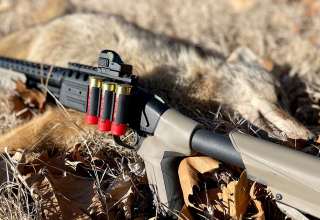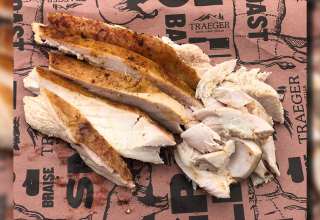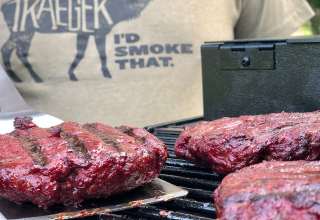No matter what shotgun and ammo you’re using, synchronizing point-of-aim and point-of-impact is the make or break to a successful turkey hunt. Here’s how…
by Heath Wood
The excitement of a strutting, gobbling Tom is the adrenaline rush that keeps hunters returning to the woods each spring. It can also be a heartbreaker when hunters, caught up in the moment, flub the shot.
For those one-shot, one-bird hunters, it may be difficult to wrap their heads around the notion that a turkey could be missed when leveling a shotgun on a gobbler at less than 30 yards. Yet, it happens…often. Heck, I have missed turkeys as close as eight yards. And as choke and shotshell technology continues to deliver tighter downrange patterns, the propensity for missing those “lay-up shots” only increases…especially if you’re still using a single bead for sight alignment.
Enter the red dot option.
I was first introduced to red dot shotgun optics on a youth hunt with a group of kids from southwest Missouri. While patterning guns the day before the hunt, we explained to the kids that the optic would help them aim and hopefully prevent them from missing their first turkey. Unfortunately, my way of thinking at the time was that red dots were only beneficial to kids or first-time hunters, not experienced hunters like myself. The truth is red dots can help to prevent even the most seasoned turkey hunters from making mistakes.
“Fudge” Factor
When the adrenaline is flowing as a gobbling turkey is coming into close range, it is easy to get caught up in the moment. Often, the hunter is not down on the gun or is looking over the bead instead of down the barrel. Poor aim is what is called the “fudge” factor. In my opinion, this is the number one reason for missed shots. Fortunately, it is preventable.
Since I began using a red dot on my turkey gun, I have not missed due to poor aiming.
For the past three years, I have shot a Winchester Super X3 12-gauge shotgun. When I topped it with the TRUGLO Gobble-Stopper Red Dot optic, I created a platform that, for me, makes the fudge factor a thing of the past.
The Gobble-Stopper is a 30mm scope that features two reticles that are ideal for turkey hunting. The reticles can be switched from a red or green color circle with a dot in the center. This allows me to watch the hunt unfold through the optic only and to keep my focus on making the perfect shot.
Tighter Patterns, Longer Distance, and Heavy Loads
Another common cause for missing turkeys is lack of preparation or familiarity with equipment. Specifically, we’re talking about the cumulative effects of using equipment and ammo that provides tight pellet groups and knockdown potential at greater distances.
I have, for example, long enjoyed the dense patterning I get from my turkey guns when using TRUGLO’s Head-Banger long range choke tube. While this choke delivers the patterns I look for when shooting some of the more sophisticated turkey loads out to 40 yards or so, that same dense patterning also means aiming is even more critical as those turkey-to-hunter distances decrease. When a gobbler struts to within spitting distance of my setup, proper aiming and a good sight picture becomes absolutely critical. A little off to one side or another in my aiming at those distances and I’m probably going to miss.
Also, when shooting at a small target such as a gobbler’s head, many shooters tend to put a bead sight high or low, or to the left or right. That’s because the bead usually covers the turkey’s head and many shooters are uncomfortable taking what seems like a “blind shot.”
A red dot ensures that won’t happen, assuming I’ve properly zeroed it and patterned my ammo. The same, of course, applies to shooting longer distances.
The key to success with a red dot is to synch it with the choke and ammo you intend to use. Find the ammo that delivers the best pattern from your gun and simply adjust the point of impact by moving the optic’s windage and elevation—just like you would when zeroing a rifle. Be sure to shoot on paper at a range of distances—20, 30, and 40 yards—to guarantee your point of impact matches your point-of-aim across your effective shooting range.
Further complicating the point-of-aim/point-of-impact issue is the increasingly popular trend of shooting high-performance tungsten loads. Tungsten delivers astonishingly tight patterns and brutal knockdown power out to 60 and 70 yards. Have you ever tried precision aiming with an old-school front bead sight at those distances? Yeah, it’s a foolhardy endeavor. Here, again, the red dot is the turkey hunter’s salvation. The pattern is there, but the sight placement is a bit fuzzy when you stretch out that far with a bead sight.
Once you have settled on the ammo that performs best out of your shotgun and choke combination, and you have added a red dot optic that is producing point-of-aim/point-of-impact consistency, you will have eliminated most of the human errors that result in missed shots at spring Toms.






















